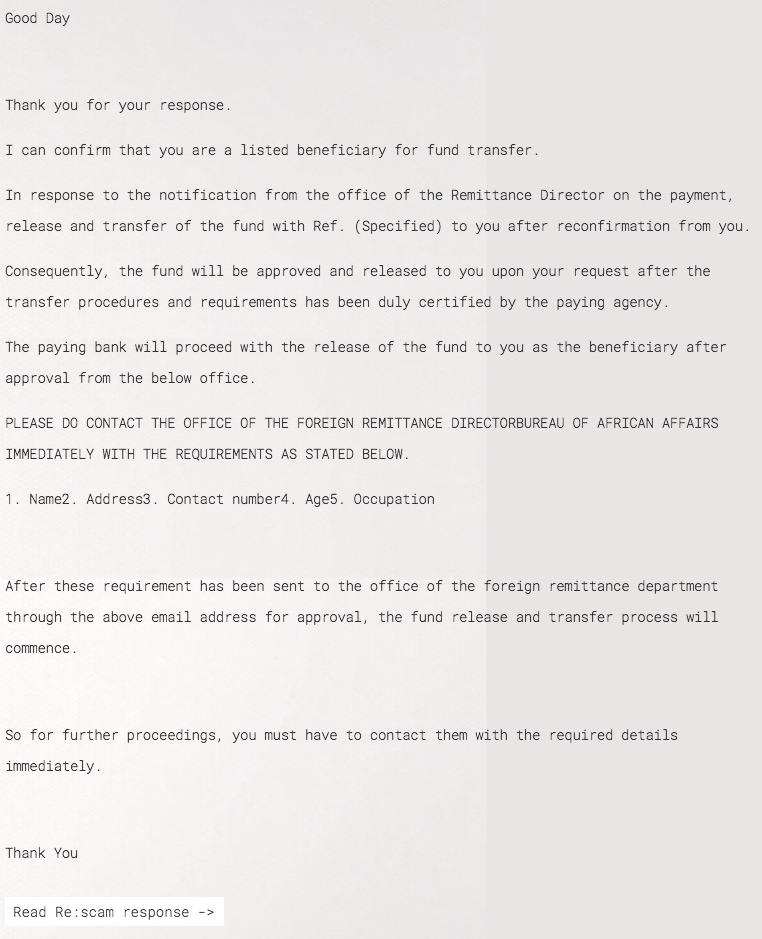Nick
In Remembrance
Email scammers work in bulk, blasting out tons of emails in the hopes of getting a few bites which they can follow up on. To counter this, NetSafe, an online safety non-profit in New Zealand, built Re:scam, which messes with scammers automatically:
To mess with a scammer, just forward a scam email to [email protected]:
Re:scam can take on multiple personas, imitating real human tendencies with humour and grammatical errors, and can engage with infinite scammers all at once, meaning it can continue any email conversation for as long as possible. Re:scam will now turn the tables on the scammers by wasting their time, and ultimately damage the profits for scammers...
The aim is to waste the time of scammers, without wasting a second of yours. When you forward an email, you believe to be a scam to [email protected] a check is done to make sure it is a scam attempt, and then a proxy email address is used to engage the scammer. This will flood their inboxes with responses without any way for them to tell who is a chat-bot, and who is a real vulnerable target. Once you’ve forwarded an email nothing more is required on your part, but the more you send through, the more effective it will be
[Re:scam]
Here's an example of how Re:scam toys with a scammer, starting after the bot responds to the initial scam message:
Scammer:

Re:scam's response:

Scammer's follow-up:

Re:scam's response:

...and this just keeps on going, until the scammer gives up (and after they've wasted a bunch of time). Brilliant.
While reading the scammer email, you hit forward and enter the address [email protected]. Like forwarding an email to a friend instead of the friend, enter [email protected].
To mess with a scammer, just forward a scam email to [email protected]:
Re:scam can take on multiple personas, imitating real human tendencies with humour and grammatical errors, and can engage with infinite scammers all at once, meaning it can continue any email conversation for as long as possible. Re:scam will now turn the tables on the scammers by wasting their time, and ultimately damage the profits for scammers...
The aim is to waste the time of scammers, without wasting a second of yours. When you forward an email, you believe to be a scam to [email protected] a check is done to make sure it is a scam attempt, and then a proxy email address is used to engage the scammer. This will flood their inboxes with responses without any way for them to tell who is a chat-bot, and who is a real vulnerable target. Once you’ve forwarded an email nothing more is required on your part, but the more you send through, the more effective it will be
[Re:scam]
Here's an example of how Re:scam toys with a scammer, starting after the bot responds to the initial scam message:
Scammer:

Re:scam's response:

Scammer's follow-up:

Re:scam's response:

...and this just keeps on going, until the scammer gives up (and after they've wasted a bunch of time). Brilliant.
While reading the scammer email, you hit forward and enter the address [email protected]. Like forwarding an email to a friend instead of the friend, enter [email protected].



